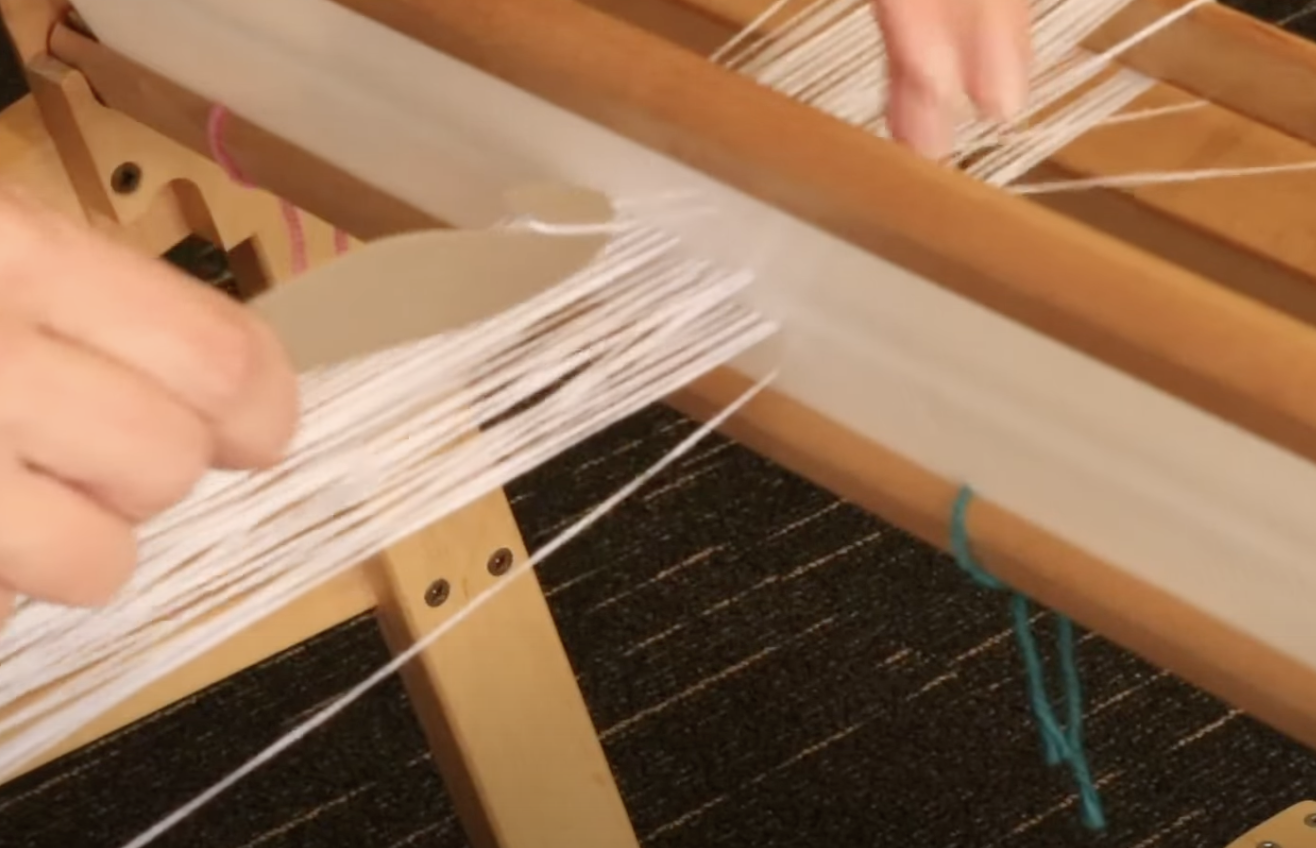Doubling sett in rigid heddle weaving is relatively straightforward, but you might wonder whether there is more than one method for doing so. You might also wonder which projects or circumstances would call for doubling the sett?
Today’s Ask Kelly question is all about how to double the sett on your rigid heddle loom and which heddle size might be most useful.
Hi there,
“I just finished watching the what do all the numbers mean video and I have two questions for you- you suggest using a 10 dent heddle for 8/2 cottolin and indicated you should double the ends- when you said 2x 10 dent- do you mean use two ten dent reeds? I think I just figured it out! You mean use two 10 dent reed or double up the ends on one 10 dent reed- did I get that right? Also- I only have the one 7.5 reed that came with my rigid heddle loom (Ashford) would you suggest purchasing a 10 dent read next? Have a great day thanks!“
Cindy
****************************************************************
Hi Cindy,
Yes, you are correct that 2 x 10 dent means two separate heddles of the same size (in this case 10 dent). When you want to double your sett you have 2 options – you can simply double the number of ends in a single 10 dent heddle OR you can use 2 x 10 dent heddles to double the sett.
Whichever way you decide to go, you still need to double your total number of ends to double your sett.
For the second part of your question, I would ask what you weave the most or what you would like to. If you want to weave a lot of kitchen towels, a 10 or 12-12.5 dent heddle would be a very worthwhile investment. A 10 dent is also great for fingering weight yarn which can be lovely for scarves, runners etc.
*************************************************************************
Now that I’ve answered Cindy’s questions, I want to go a little more in depth on the idea of doubling sett for a rigid heddle loom.
The two methods I mentioned for doubling sett are:
- Using a single heddle and doubling all warp threads.
- Using two heddles to double and space warp threads.
The next thing you might wonder is which method to choose and what the differences are.
Well, the single heddle is really advantageous because not everyone who wants to double their sett has a second heddle of the exact same size in their weaving toolkit. It is quick and easy to learn and means that when you get to the weaving, you just weave as normal with the one heddle. When doubling your sett with one heddle, you thread holes and slots at the same time as direct warping, completely negating the usual requirement to thread holes separately.
Why would you opt to use two heddles then, if one heddle is cheaper and (some will find) easier? If you’re more of a particular kind of weaver (that is SO not me! 😆) it might be more important to you that all the doubled warp threads are correctly and evenly spaced. I’ve also heard that some weavers actually like holding the two heddles together or banding them together. Again, that is not for me!
Another difference between the two methods is the threading. With one heddle, you will have 2 ends in every hole and 2 ends in every slot. With the two heddle method, you will have a single end in the hole on each heddle and 3 threads in the slots.
The single heddle method is presented in this video tutorial:
Some weavers prefer the look of the cloth that is woven by the two heddle method, as it gives more of a basketweave effect.
Another question that someone is bound to ask after reading this (because someone always does!) is whether to also use a doubled weft when using a doubled warp.
If you want to be technical, then technically you should double your weft for a balanced weave. But who says you always have to have a balanced weave? You certainly don’t!
For most of my projects I use a single weft. Why? Because I like the resulting fabric. It’s soft, it’s substantial but not too thick, it looks good to me. But I encourage you to experiment and find your own personal preference.
*This post contains affiliate links. For further information, please see my disclosure policy.
If you find you do prefer a doubled weft, then check out this video for an easy weft doubling method:
I hope you enjoyed this edition of Ask Kelly and until next time…
Happy Weaving!
